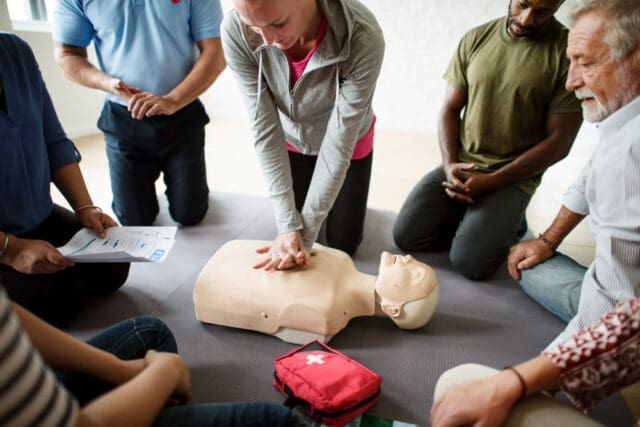The allure of online Basic Life Support (BLS) certification courses is hard to resist with their flexibility and convenience. But just like any training program, it’s vital to weigh the benefits and drawbacks before enrolling in an online BLS certification course. Without further ado, let’s delve into the top eight pros and cons of online BLS certifications that will help you make a well-informed decision.
Best: 1. Flexibility
The flexible nature of online Basic Life Support courses is beneficial for those who have time constraints or are located in distant, less accessible places where training facilities are limited. With the convenience of completing the course at one’s own pace and from any location with internet connectivity, individuals can better manage their busy schedules while gaining essential life-saving knowledge.
1. Cost-Effective
Online Basic Life Support certification courses provide a cost-efficient alternative to traditional instructor-led training programs. This option is particularly advantageous for individuals with limited budgets who are unable to afford the high fees associated with conventional courses. Opting for web-based instruction allows learners to save their resources without sacrificing the excellence of BLS training they can receive.
2. Self-Paced Learning
Self-paced learning is another great benefit of online BLS certification courses like the ones offered at protrainings.com. Individuals can take their time watching videos, reviewing materials, and practicing skills until they feel confident and comfortable. This flexibility empowers learners to tailor their study plan according to their preferred learning style.
3. Comfort and Convenience
The comfort and convenience of online learning cannot be overstated. With online BLS certification courses, individuals can learn from the comfort of their own homes or anywhere with an internet connection. They can avoid the expenses associated with travel and accommodations that often accompany traditional instructor-led training.
4. Standardized Delivery of Training Content
Choosing an online Basic Life Support course ensures that trainees receive standardized and accurate learning materials, guaranteeing their mastery of essential life-saving techniques. This comprehensive approach to training empowers individuals with the necessary skills and knowledge to confidently respond to emergency situations without hesitation, potentially saving numerous lives in the process.
Worst: 1. Limited Hands-On Practice
Despite a range of benefits, online BLS certification courses may not provide the same level of hands-on practice found in traditional instructor-led training. This could potentially result in trainees not feeling as confident or competent when it comes to performing CPR or other essential life-saving techniques. Basic Life Support training is crucial for citizens and healthcare professionals in order to respond successfully in emergency situations.
1. Lack of Immediate Feedback
One potential downside of online BLS certification courses is the lack of immediate feedback during hands-on practice. While trainees can practice at their own pace, they may not be able to receive immediate feedback on whether or not they are correctly performing techniques.
2. BLS Skill Insufficiency
Although web-based self-instruction for Basic Life Support certification courses offers advantages such as flexibility, autonomy, and cost reduction in training programs, individuals may not acquire sufficient BLS skills without adequate hands-on practice. Hence, while online learning can be effective in improving knowledge and confidence levels among trainees regarding resuscitation techniques, it should ideally be paired with practical application to ensure skill retention.
Conclusion
Online certification courses on Basic Life Support present numerous advantageous prospects for individuals who wish to acquire life-saving skills. Nevertheless, it is essential to consider these benefits in comparison with the possible drawbacks, such as inadequate hands-on training experiences, the absence of instant response mechanisms, and deficient BLS abilities.
In the current fast-paced world, being well-equipped with life-saving skills and knowledge is imperative to respond confidently during emergencies. For this reason, it is highly recommended that individuals opt for online BLS certification courses along with practical hands-on training in a blended learning format. This will ensure that trainees gain not only vital theoretical knowledge but also develop psychomotor skills effectively through web-based self-instruction or instructor-led Basic Life Support sessions.
Moreover, blending these two methods could lead to reduced burdens on instructors while augmenting standardized delivery of training content and lowering expenses associated with traditional mentoring programs. Therefore, consider taking advantage of both modes of instruction by pairing them up for an extensive preparatory experience before you find yourself confronted by unexpected emergency situations at any point in time!
Featured Image by rawpixel.com on Freepik




